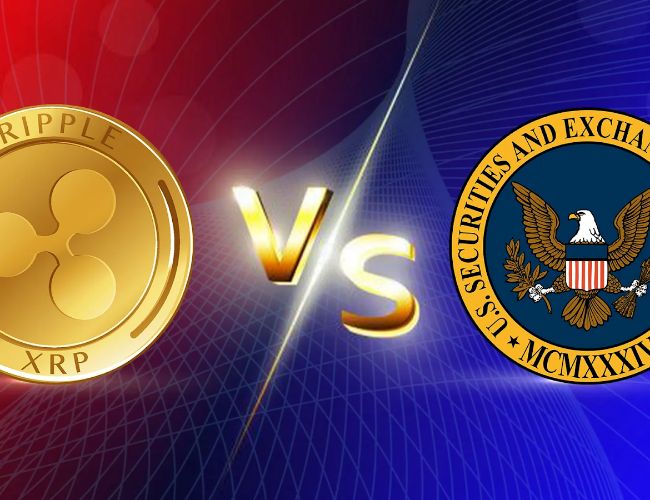Ripple Labs, the company behind the cryptocurrency XRP, continues to navigate its legal challenges with the U.S. Securities and Exchange Commission (SEC) as the case moves into the appeals stage. This ongoing litigation, initiated in 2020, revolves around the classification of XRP as a security and whether Ripple unlawfully conducted unregistered sales of the token. With the appeal process in motion, Ripple and the SEC prepare for a prolonged legal battle that could stretch well into 2026.
Key Milestone: Ripple’s Appeal and the SEC’s Next Moves
Ripple’s Chief Legal Officer (CLO), Stuart Alderoty, recently shed light on the company’s next steps in the appeals process during the Swell conference. He highlighted that the SEC is required to submit Form C by October 16, 2024, indicating which aspects of the case they intend to challenge. This form is a key procedural step in setting the stage for the agency’s appeal. Just two weeks later, Ripple is expected to submit its own Form C, laying out its cross-appeal strategy.
🚨NEW: Just had a great chat with @s_alderoty of @Ripple who gave me a rundown of the appeals timeline.
— Eleanor Terrett (@EleanorTerrett) October 15, 2024
📌The @SECGov’s last day to file Form C (which will give some level of detail about what it plans to appeal) is tomorrow.
📌Seven days later, Ripple will file its own Form…
Ripple’s cross-appeal specifically targets the ruling related to the institutional sales of XRP, which Judge Analisa Torres determined to be unregistered securities transactions. Moreover, the firm aims to challenge this part of the ruling, seeking to clarify its position that these institutional sales do not meet the criteria of “investment contracts” under U.S. securities law. This legal distinction could have far-reaching implications not just for Ripple but for the entire cryptocurrency and altcoin market.
Timeline of the Appeals Process: What to Expect Next
Following the submission of Form C, the appeals process will unfold over several months. The SEC is expected to file its first brief within 90 days, likely by
Ripple will then have the opportunity to respond with its own brief, presenting its counterarguments and legal rationale. This back-and-forth of legal filings will continue throughout 2025, with several rounds of briefs and replies, before the case reaches a hearing in the U.S. Court of Appeals for the Second Circuit.
“Both parties will then agree on a briefing schedule and the SEC then has up to 90 days to file its first brief. Alderoty says he expects them to take the full 90 days.”
Stuart Alderoty noted that while this drawn-out process could take time, Ripple feels confident in its legal footing, especially given that the Second Circuit has historically been less likely to overturn lower court rulings. This, according to Alderoty, puts Ripple in a favorable position as it seeks to solidify its stance that XRP is not a security.
Ripple’s Focus: Institutional Sales of XRP
At the heart of Ripple’s cross-appeal is the question of whether institutional sales of XRP should be considered unregistered securities transactions. In her ruling, Judge Torres differentiated between retail and institutional sales of XRP, finding that retail sales did not constitute unregistered securities offerings, but institutional sales did.
Ripple disputes this conclusion, arguing that these transactions did not involve investment contracts—a critical component in determining whether an asset is classified as a security. Similarly, the firm’s legal team asserts that institutional sales of XRP lacked the specific rights and obligations that typically characterize securities under U.S. law.
Alderoty explained that Ripple is pursuing a legal precedent that clearly defines these distinctions, which could not only benefit the company but also provide clarity for the broader altcoin and cryptocurrency markets. Such clarity is essential in an environment where the regulatory landscape for digital assets remains uncertain.
Impact on the Cryptocurrency Industry
While this legal battle is primarily between Ripple and the SEC, the implications of the case extend beyond the parties involved. The outcome of the appeal could set a legal precedent that shapes the future regulation of cryptocurrencies and altcoins in the United States. Ripple has consistently maintained that XRP is not a security, and a favorable ruling from the Second Circuit could reinforce this position, influencing how other tokens are regulated in the future.
Stuart Alderoty has expressed optimism that the SEC’s appeal could ultimately backfire, noting that the agency’s attempts to seek clarification through the legal system might lead to broader regulatory clarity for the cryptocurrency industry. This case has drawn attention not only from XRP investors but from the entire digital asset community, as the final decision will likely impact how the SEC approaches enforcement actions against other cryptocurrency projects.
Ripple’s Global Expansion Amid Legal Challenges
Despite its ongoing legal battle in the U.S., Ripple continues to expand its operations globally. At the Swell conference, the company announced the launch of RLUSD, a stablecoin pegged to the U.S. dollar, aimed at facilitating faster and cheaper cross-border payments.
This Ripple’s stablecoin will be issued under New York’s stringent regulatory framework, a move that could help the company navigate the increasingly complex regulatory environment surrounding digital assets. Ripple’s decision to issue RLUSD under a robust regulatory structure is seen as a strategic move, especially as other stablecoins face heightened scrutiny.
Besides, the launch of RLUSD demonstrates Ripple’s focus on advancing in the cryptocurrency space while adhering to regulatory requirements, further solidifying its position as a major player in the digital payments industry.
 cryptonews.net
cryptonews.net
